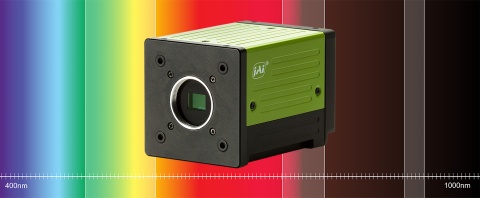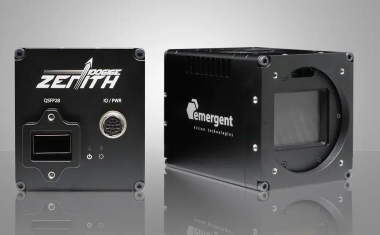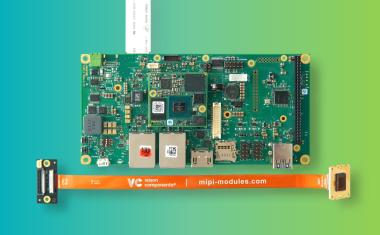JAI introduces "Flex-Eye"

JAI has combined a configurable design process with its Fusion Series of high performance, prism-based multispectral cameras to make it possible for customers to specify a custom set of multispectral wavebands for their Fusion Series cameras. The innovative new approach is called "Flex-Eye" and it is designed to make multispectral imaging even more effective by precisely tailoring the wavebands to the exact requirements of specific applications, including those in fluorescence-guided surgery, food inspection, intelligent farming, agricultural analysis (NDVI/NDRE), electronics inspection, biometrics, and many more.
JAI standard Fusion Series cameras are prism-based multispectral area scan cameras equipped with two or three Sony Pregius CMOS sensors offering either 1.6 megapixels or 3.2 megapixels of resolution and a set of predefined wavebands – one that spans the entire visible spectrum (400-700 nm) and one or two additional wavebands located in the NIR region (700-1000 nm). A dichroic prism divides the incoming light to the separate sensors while maintaining a common optical path. This affords simultaneous capture of all wavebands with high frame rates and perfect pixel-to-pixel alignment enabling the cameras to handle movement and fine details that might cause problems for other types of multispectral cameras.
With the addition of Flex-Eye, users can now customize the spectral locations and widths of the individual wavebands to better suit the needs of their application, rather than accepting the default wavebands in the standard models. Depending on the user's requirements, the two or three user-specified wavebands can all be located within the visible spectrum or can be placed at multiple locations across the 400-1000 nm range.
The Fusion Flex-Eye cameras have a size of 62 mm x 62 mm x 86.5 mm, with a lens mount supporting C-mount lenses.









